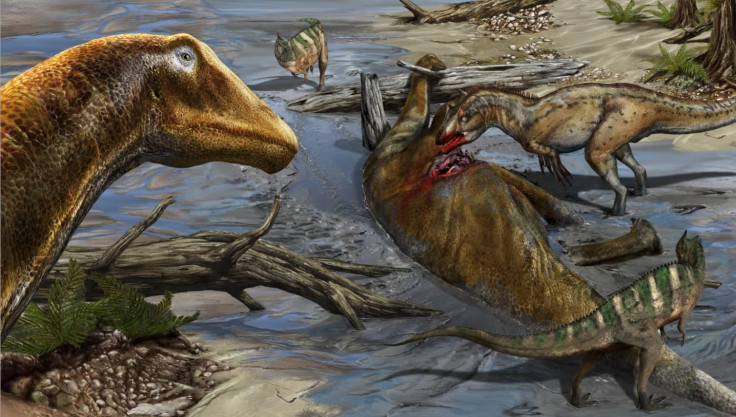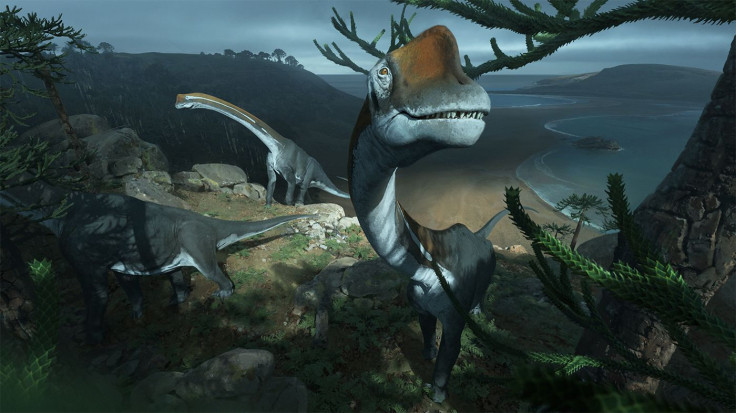Dinosaur News: New Species Found In Wyoming, Overlooked Fossil From France Identified

Researchers from Italy and Portugal announced Tuesday the discovery of a new dinosaur species that lived 150 million years ago in what is Wyoming today. Named Galeamopus pabsti, the Jurassic era dinosaur’s fossil was excavated in 1995 by a Swiss team.
Paleontologists from the University of Turin in Italy, and Universidade Nova de Lisboa along with Museu da Lourinhã in Portugal, described the new sauropod species in a paper titled “Osteology of Galeamopus pabsti sp. nov. (Sauropoda: Diplodocidae), with implications for neurocentral closure timing, and the cervico-dorsal transition in diplodocids,” that appeared Tuesday in the journal PeerJ.

G. pabsti was similar to the more famous dinosaur genus Diplodocus, whose members grew over 80 feet in size. In comparison, G. pabsti had “more massive legs, and a particularly high and triangular neck close to the head,” according to a statement Tuesday by the authors of the paper.
The species was named in honor of Ben Pabst, who along with Hans-Jakob "Kirby" Siber, led the Swiss team of excavators who first found the fossil. Sauropods had greatly elongated necks and tails, and large bodies. They were found in South America, Europe and Africa, but most diversity is known from North America, specifically the U.S.

In another study, also announced Tuesday, researchers from the Imperial College London along with colleagues in France and elsewhere in Europe said they identified an overlooked fossil in a museum to be the earliest known member of a giant dinosaur family called titanosauriforms, which were a subgroup of sauropods.
Discovered in France in the 1930s, the fossil had been largely ignored up till now. Researchers have named the species Vouivria damparisensis, and suggested in a statement it lived about 160 million years ago. Species that made up the titanosauriform family were among the largest land creatures to have lived, and the most famous member of the family was the brachiosaurus.
The individual specimen of V. damparisensis whose fossil the researchers examined was over 15 meters long and weighed about 15,000 kilograms. With a long neck held diagonally upward, a long tail and four legs of equal length, it was likely a herbivore.

Philip Mannion, lead author of the study from Imperial College London, said in a statement Tuesday: “Vouivria would have been a herbivore, eating all kinds of vegetation, such as ferns and conifers. This creature lived in the Late Jurassic, around 160 million years ago, at a time when Europe was a series of islands. We don’t know what this creature died from, but millions of years later it is providing important evidence to help us understand in more detail the evolution of brachiosaurid sauropods and a much bigger group of dinosaurs that they belonged to, called titanosauriforms.”
The name of the species pays homage to Damparis, the village where the fossil was found. The first word of its name derives from an old French word whose Latin root means “viper.” In the region of Damparis, “la vouivre” is a mythical winged reptile.
© Copyright IBTimes 2025. All rights reserved.





















